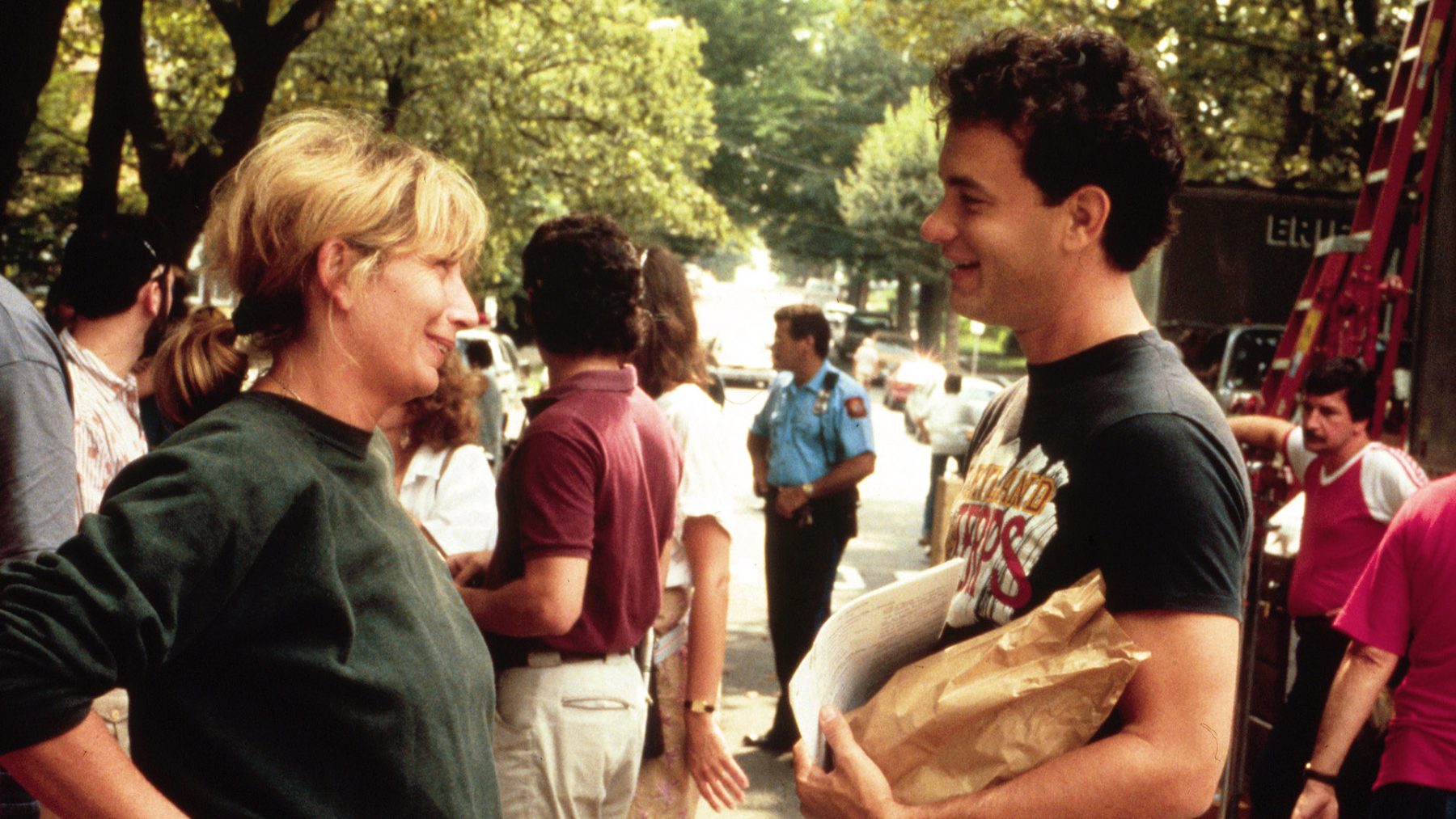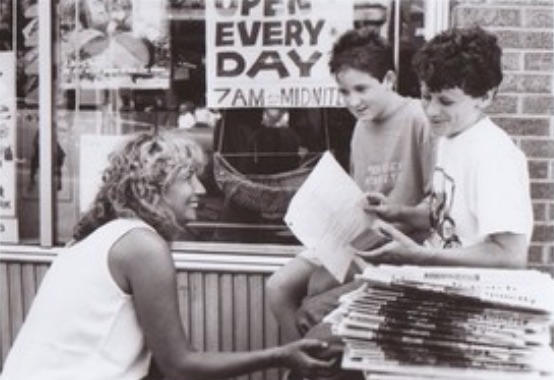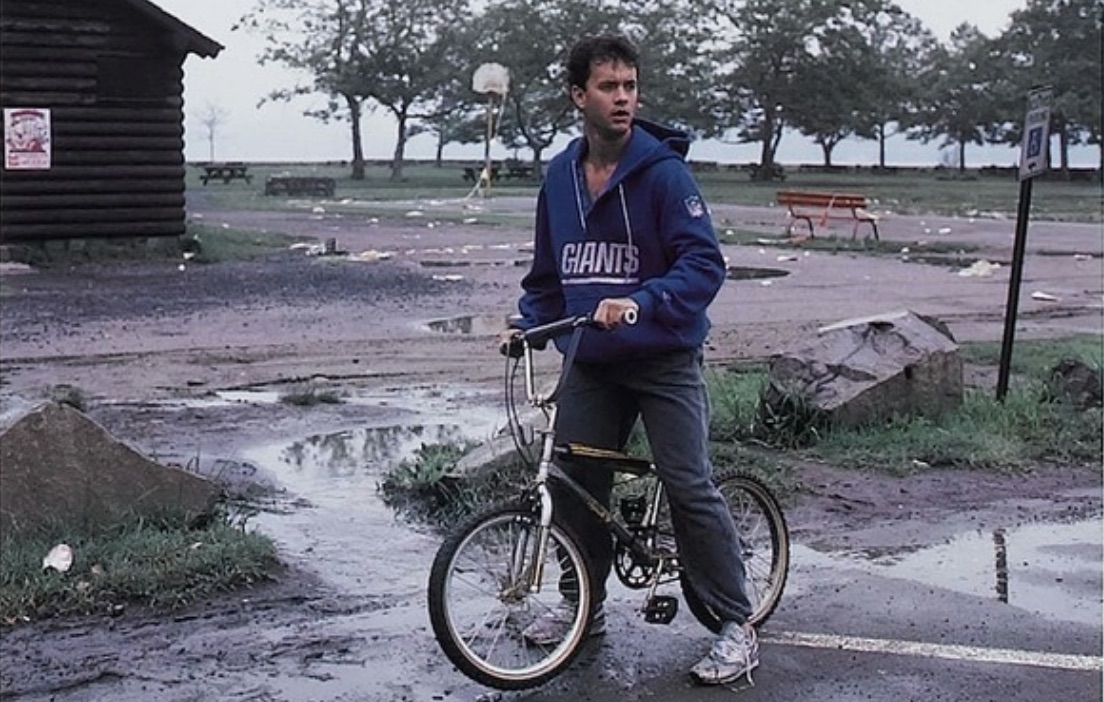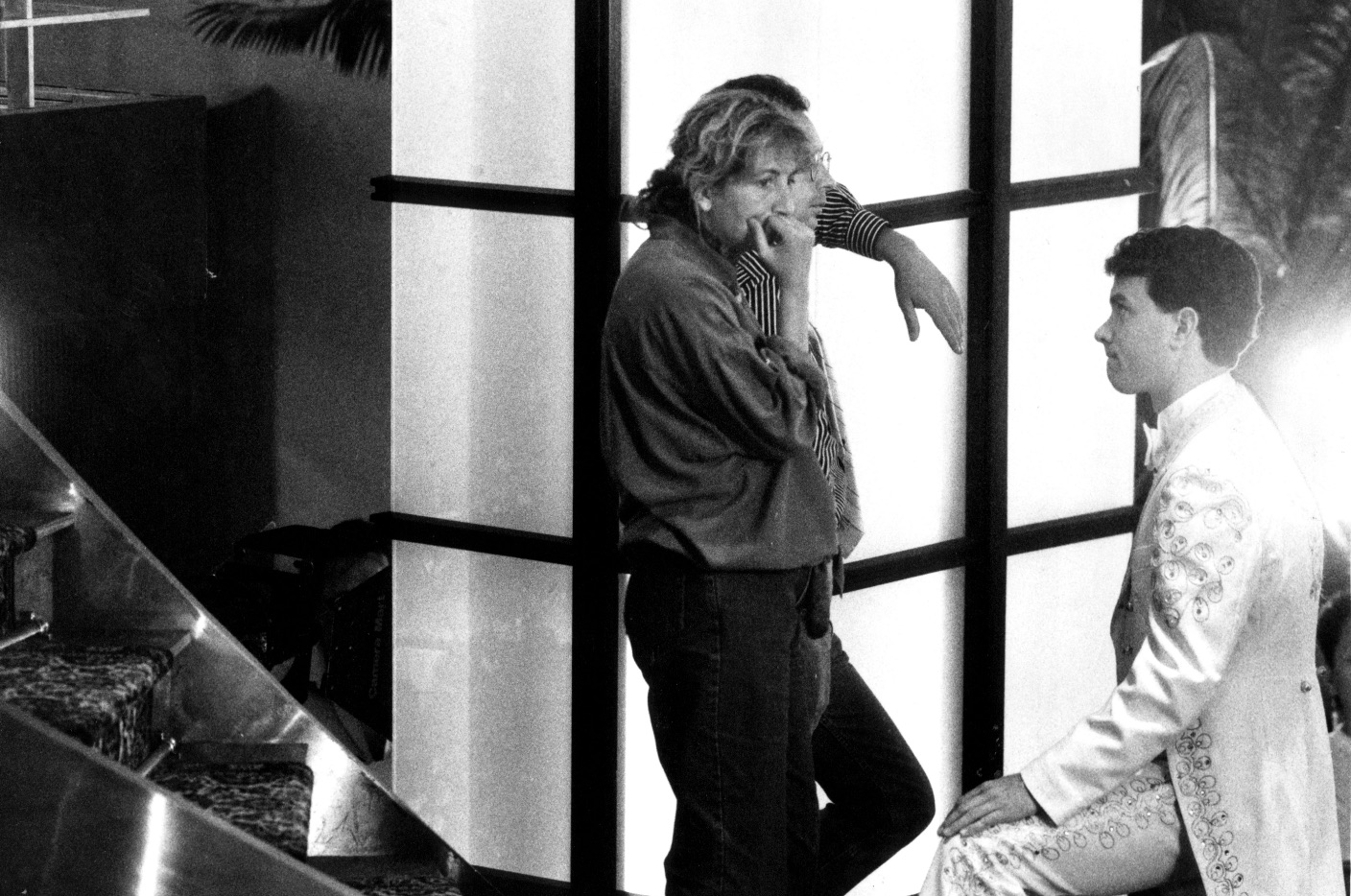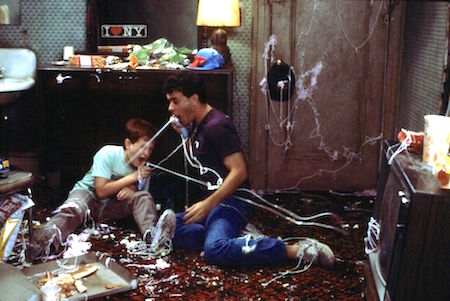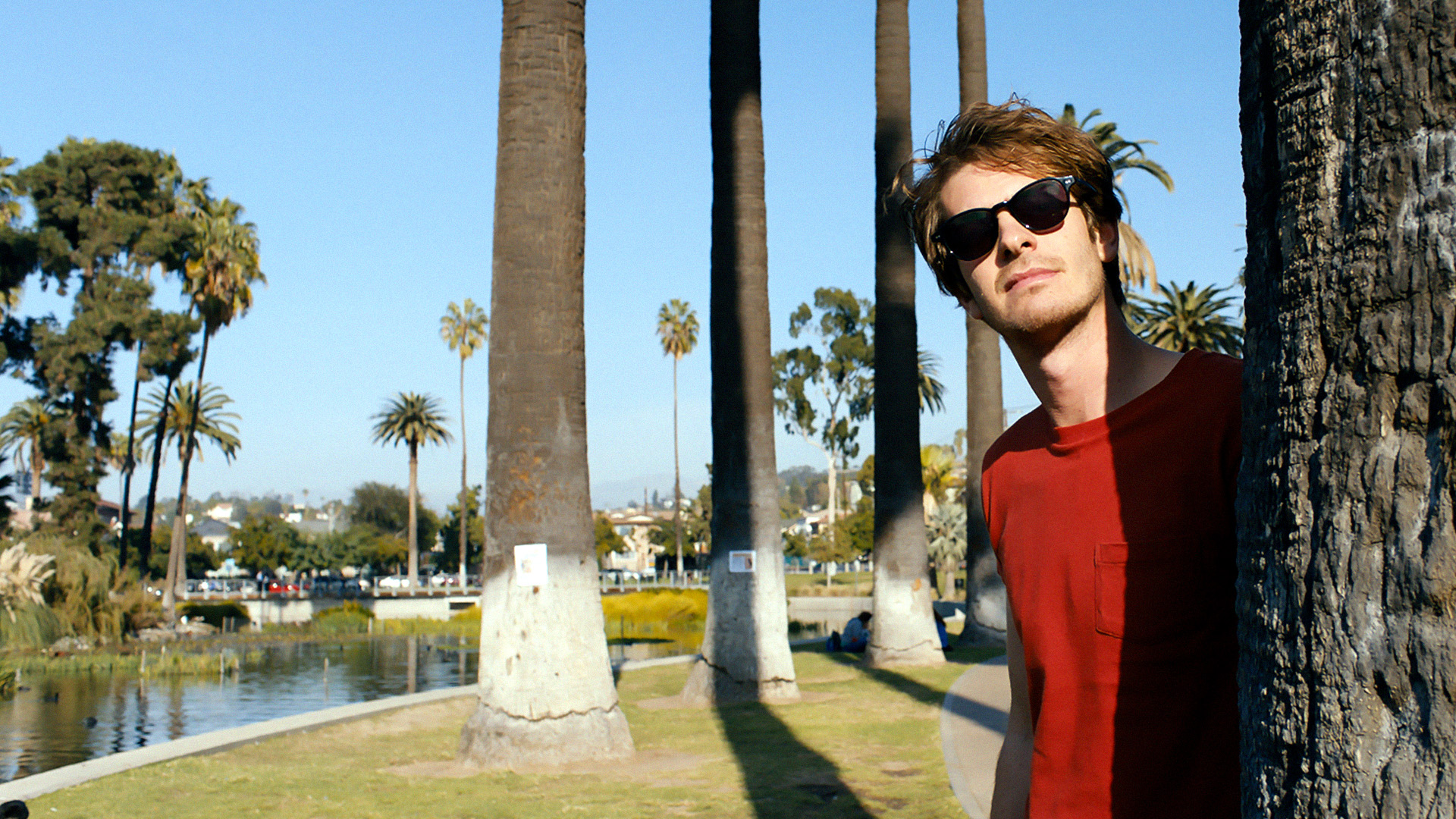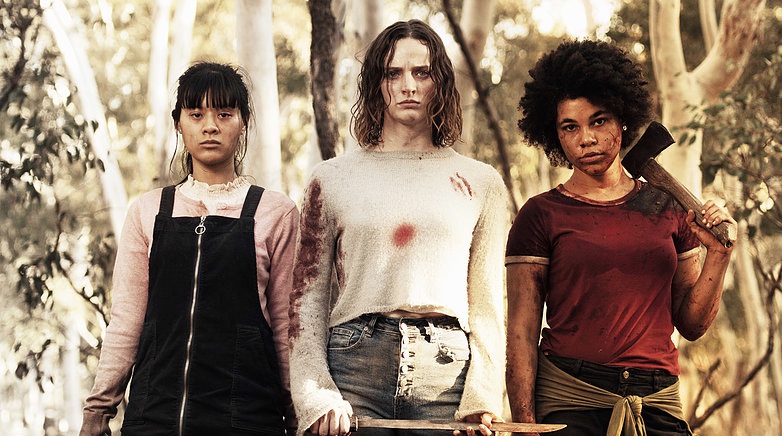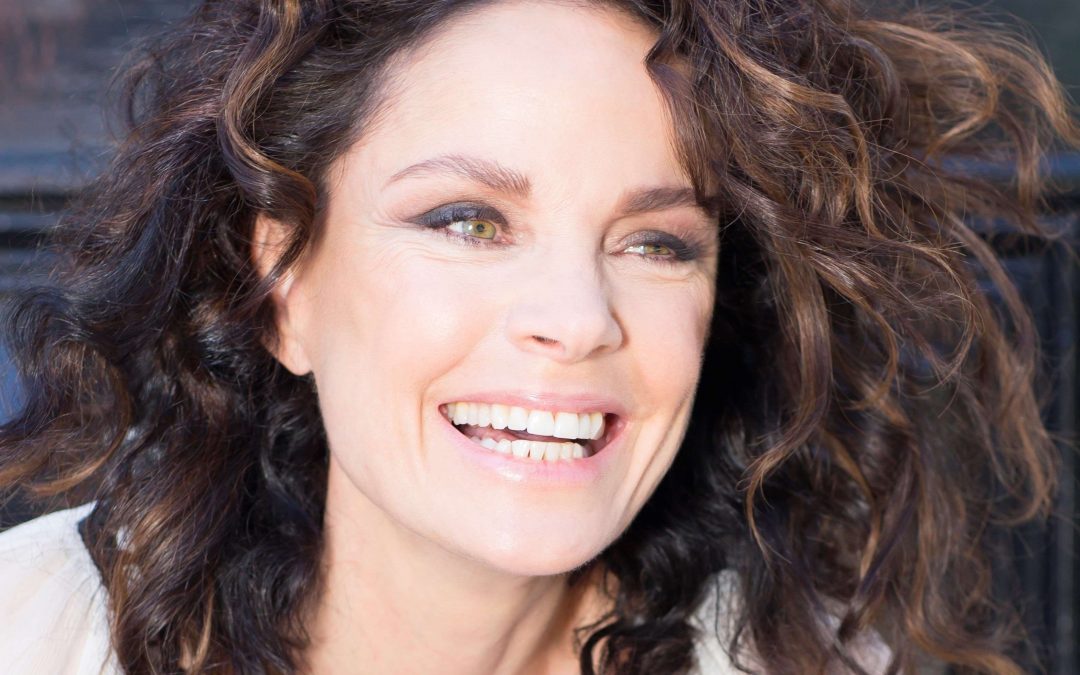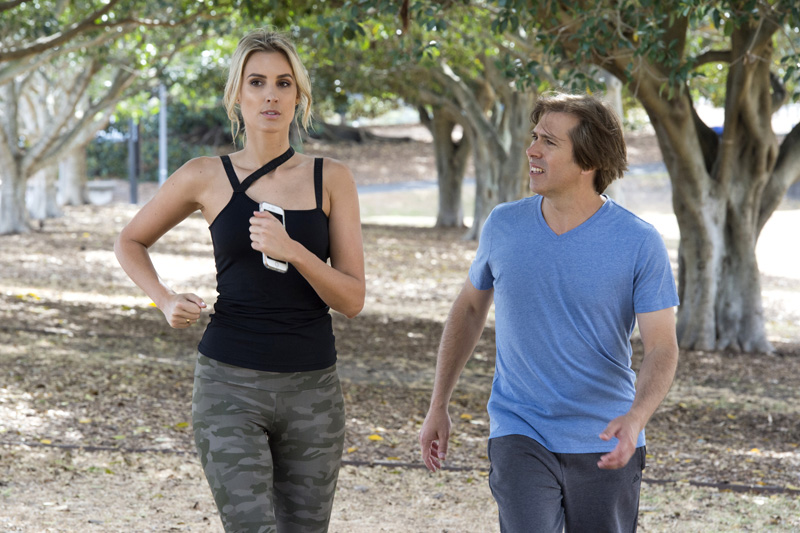Tickets available from the Event Cinemas George Street box office and online here.
Australia’s leading celebration of science-fiction cinema, the SciFi Film Festival, has a wondrous line-up of breathtaking works from the planet’s most visionary filmmakers as part of their fifth anniversary edition.

From 18th to 21st October, Sydney audiences seeking an adventurous movie-going experience will converge on the Event Cinemas George St complex to view 25 groundbreaking genre works from 11 countries, including two world premieres, 18 Australian premieres and 3 New South Wales premieres. (Pictured, above; Dan Prince's short Invaders)
Nine features and 16 short films will play across the four days of the SciFi Film Festival. Countries represented include Australia (6 films), the United Kingdom (5), the U.S.A. (4), Germany (2), Canada (2), Hong Kong (1), France (1), The Netherlands (1), Lebanon (1), Austria (1) and the Dominican Republic (1).
 Opening Night audiences will be treated to a thrilling, unique cinematic experience with the Australian premiere of Johann Lurf’s ★ (pictured, right). This towering achievement examines how the night sky and the deep void that lies beyond, has been portrayed on screen in 100 years of cinema. The Austrian ‘constructuralist’ has compiled starscapes from over 550 films, from the silent era to 2018, resulting in a captivating work of the imagination; a montage-doc that celebrates humanity’s drive to explore the galaxy and how filmmakers have conjured that experience for us all.
Opening Night audiences will be treated to a thrilling, unique cinematic experience with the Australian premiere of Johann Lurf’s ★ (pictured, right). This towering achievement examines how the night sky and the deep void that lies beyond, has been portrayed on screen in 100 years of cinema. The Austrian ‘constructuralist’ has compiled starscapes from over 550 films, from the silent era to 2018, resulting in a captivating work of the imagination; a montage-doc that celebrates humanity’s drive to explore the galaxy and how filmmakers have conjured that experience for us all.
Screening on Friday October 19 are films that will explore the ‘alien’ sub-genre. To commemorate the 25th anniversary of her iconic TV show ‘The X-Files’, Gillian Anderson will re-engage with her loyal fanbase with the Australian premiere of the conspiracy-theory thriller, UFO. Close out your Friday evening of extra-terrestrial interaction with CANARIES, a ‘Shaun-of-the-Dead’-style comedy/sci-fi romp in which Welsh New Year’s Eve partygoers must face off against an invading intergalactic force.
Across the weekend, the eclectic program will present films that have played such festivals as Karlovy Vary, FrightFest, Sitges and Sundance: Direct from its award-winning World Premiere at SXSW, PROSPECT stars the remarkable Sophie Thatcher in an interplanetary survival thriller; Dominican director Héctor Valdez remakes the Australian time-travel/rom-com ‘The Infinite Man’ as the delightfully off-kilter romp PEACHES; and, the rise of A.I. and the impact of sentient robotics is explored in the quietly-frightening documentary, MORE HUMAN THAN HUMAN.
 Two Australian features are highlights of the 2018 features roster. Director Adam Harris will present his heart-warming ‘Star Wars’-themed documentary, MY SAGA, followed by a Q&A session with his friend and co-host of SBS’s ‘The Feed’ program, Marc Fennell; and, direct from its World Premiere at the Karlovy Vary Film Festival, the confronting dramatic feature REFLECTIONS IN THE DUST (pictured, right) will be presented by writer/director Luke Sullivan for a session that is sure to inspire a passionate post-screening panel discussion, to be hosted by Fiona Williams, host of the hit podcast Eyes on Gilead and managing editor of SBS Movies.
Two Australian features are highlights of the 2018 features roster. Director Adam Harris will present his heart-warming ‘Star Wars’-themed documentary, MY SAGA, followed by a Q&A session with his friend and co-host of SBS’s ‘The Feed’ program, Marc Fennell; and, direct from its World Premiere at the Karlovy Vary Film Festival, the confronting dramatic feature REFLECTIONS IN THE DUST (pictured, right) will be presented by writer/director Luke Sullivan for a session that is sure to inspire a passionate post-screening panel discussion, to be hosted by Fiona Williams, host of the hit podcast Eyes on Gilead and managing editor of SBS Movies.
Closing Night will be a celebration of ‘80s nuclear paranoia, with final-session honours bestowed upon the cult classic MIRACLE MILE. Writer/director Steve De Jarnatt’s 1989 romantic thriller, starring Anthony Edwards and Mare Winningham and featuring a soundtrack by Tangerine Dream, will see the inside of a Sydney cinema for the first time in three decades. Ahead of the feature presentation, director Johann Earl will screen the World Premiere of his alien warzone actioner SHIFT, starring Bianca Bradey (‘Wyrmwood: Road of The Dead’).
Soaring visions and complex themes are central to the 2018 short films selection. The 16 shorts feature a selection of truly inspired cinematic works from such fields as animation (Alex Fung’s EKO); steampunk-influenced animatronics (Fadi Baki Fdz’s MANIVELLE: THE LAST DAYS OF THE MAN OF TOMORROW); music video aesthetics (Marc Adamson’s AFTER WE HAVE LEFT OUR HOMES); experimental (Xavier Brydges’ WESTALL); and, effects-heavy deep-space drama (Bobby Bala’s THE SHIPMENT). One of Australia’s most respected film journalists, Travis Johnson, will host a Q&A with attending directors on the passion for genre storytelling that drives their short film projects.
 All features will be in Official Competition for festival honours in the categories Best Film, Actor, Actress, Music/Sound and Effects. Short films will vie for awards in Best Australian and Best International categories. The Jury Members will be announced closer to the festival dates.
All features will be in Official Competition for festival honours in the categories Best Film, Actor, Actress, Music/Sound and Effects. Short films will vie for awards in Best Australian and Best International categories. The Jury Members will be announced closer to the festival dates.
The Sci-Fi Film Festival supports positive gender representation in its 2018 selection; 16 of the 25 productions (or 64%) feature a woman in one of the four key production positions. Five female directors have their works represented in the program - JESSICA CHAMPNEYS (‘Star Wars: Dresca’, US); SOPHIA SCHONBORN (‘Spacedogs’, Germany), KAT WOOD (‘Stine’, U.K.), FEMKE WOLTING (co-director, ‘More Human Than Human’, The Netherlands) and EMILY LIMYUN DEAN (‘Andromeda’, Australia/U.S./Germany; pictured, above).
Making its debut in 2018 is The SciFi Film Festival Vanguard Award, presented to an individual whose unique creative endeavours display a determination and fearlessness in the face of adversity. The inaugural honouree will be 2000 Sydney Paralympian-turned-actress, Sarah Houbolt, star of REFLECTIONS IN THE DUST.
SCREEN-SPACE is an Official Media Partner of the 2018 SciFi Film Festival.
(A RE-POST OF THE PROGRAM ANNOUNCEMENT PRESS RELEASE WRITTEN BY SCIFI FILM FESTIVAL PROGRAM DIRECTOR AND SCREEN-SPACE EDITOR, SIMON FOSTER)































